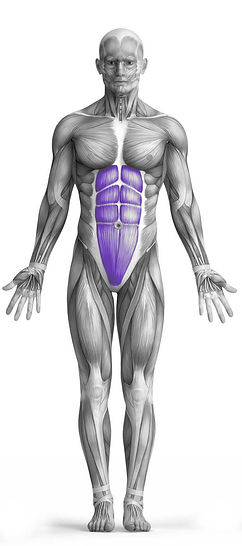Lying Leg Raise With Hip Thrust 101 Video Tutorial
0

Exercise Synopsis
Target Muscle Group
Abs
Secondary Targets
None
Execution
Compound
Force Type
N/A
Required Equipment
Bodyweight
Fitness Level
Beginner
Variations
None
Alternatives
None
Timer
Hour
Minute
Second
Stopwatch
00:00:00:00
Overview
The "Lying Leg Raise With Hip Thrust" is an effective bodyweight exercise primarily targeting the abdominal muscles. It involves lying on your back with your legs extended, then lifting your legs towards the ceiling while simultaneously thrusting your hips upward to engage the core more intensely. This exercise focuses on strengthening the lower abs and improving overall core stability. It requires no equipment, making it accessible for those looking to enhance their core strength at home or anywhere without the need for weights. Proper form and control are key to maximizing its effectiveness.
How to Perform
Start by positioning a flat bench with enough space for your legs to extend off the edge comfortably. Sit near one end of the bench, ensuring your buttocks are close to the edge.
Lie back on the bench and hold the sides of it at head height for support and stability.
Extend your legs fully, keeping them together and level with your body. This is your starting position.
Engage your core and bend at the hips, raising your legs slowly towards the ceiling. Keep the movement controlled and focus on using your abs to lift the legs.
As your legs reach the top, thrust your hips upward, lifting your pelvis off the bench. Aim to raise your pelvis as high as you can while maintaining control.
Gradually lower your pelvis back down, then slowly lower your legs to return to the starting position, ensuring your core remains engaged throughout.
Focus on maintaining a smooth and controlled motion during the entire exercise to effectively target the abdominal muscles and avoid unnecessary strain on your lower back.
Tips
Perform the entire movement with a slow and controlled pace to maximize muscle engagement and effectiveness.
Increase the difficulty by pausing briefly at the peak of the hip thrust, holding the position to challenge your core further.
For added intensity, you can also hold a dumbbell between your feet while performing the exercise, increasing resistance and targeting the abdominal muscles more deeply.
How Not to Perform
Avoid Using Momentum: Do not swing your legs or use jerky movements to raise them. Instead, focus on controlled, deliberate motions to fully engage the abdominal muscles and prevent unnecessary strain on your lower back.
Do Not Arch Your Lower Back: Keep your spine neutral throughout the exercise. Avoid arching your lower back excessively when raising your legs or pelvis, as this can lead to discomfort or injury. Engage your core to maintain proper posture.
Don’t Overextend Your Legs: Avoid pushing your legs too far past your body’s natural range of motion. Going beyond what’s comfortable can strain your hip flexors and lower back. Keep your legs straight but within a controlled range.
Don’t Rush the Movement: Speeding through the exercise reduces its effectiveness. Take your time, especially during the lowering phase, to keep constant tension on your abs and avoid using momentum.
Avoid Holding Your Breath: Breathing is essential for maintaining core stability. Don’t hold your breath during the exercise. Exhale as you raise your legs and thrust your hips, and inhale as you return to the starting position.
Don’t Neglect Your Core Engagement: Ensure your core remains tight and active throughout the exercise. Failing to engage your abs properly will reduce the effectiveness of the movement and could lead to injury.
Avoid Overlifting the Hips: While lifting your pelvis is part of the exercise, don't overdo it by pushing your hips too high, as this can strain your lower back. Aim for a natural range of motion to effectively target the abs.
Don’t Let Your Feet Separate: Keep your legs together and aligned throughout the movement. Allowing your feet to drift apart can decrease the focus on your core and increase the risk of injury.
Variations
Variations of fitness exercises refer to different ways of performing a specific exercise or movement to target various muscle groups, intensities, or goals. These variations aim to challenge the body differently, prevent plateaus, and cater to individuals with varying fitness levels.
Alternatives
Alternative exercises in fitness refer to different movements or activities that target similar muscle groups or serve the same training purpose as the primary exercise. These alternative exercises can be used as substitutes when the original exercise is unavailable or challenging to perform due to various reasons such as equipment limitations, injuries, or personal preferences.



